Lecture 15: Linked Lists
Overview
- A
zooas an Array - Linked Lists, Conceptually
- Implementing a Linked List
Previously
Stored zoo as an array of Animals:
Animal[] zoo = new Animal[ZOO_SIZE];
for (int i = 0; i < ZOO_SIZE; i++) {
Animal[i] = new ...;
}
Problem:
- We need to specify
ZOO_SIZEin advance! - But we may want to add/remove
Animals from ourzoo
How can we make our zoo dynamic?
A zoo Array in Memory
How is Animal[] zoo actually stored in our computer’s memory?
Another Way to Store a Zoo
Think Locally!
- Consider an actual zoo
- Each animal is in some kind of enclosure
- Each enclosure has:
- a sign indicating what animal(s) are there
- another sign pointing to next enclosure
- This is enough information to navigate the zoo and see all animals
Representing a Zoo in Java
High level picture—a Linked List:
Thinking classes
What do we need?
-
class Noderepresenting enclosure- stores (reference to) an
Animal - stores (reference to) next
Node
- stores (reference to) an
-
class Zoo- stores (reference to) first
Node(if any) - stores (reference to) last
Nodes(if any) - implements desired operations:
- feed
Animals - add an
Animal - remove an
Animal - …
- feed
- stores (reference to) first
Implementing Node
class Node {
private Animal animal;
private Node next;
public Node (Animal animal) {
this.animal = animal;
next = null;
}
public void setNext (Node nd) {
next = nd;
}
public Node getNext () {
return Next;
}
public Animal getAnimal () {
return animal;
}
}
Making the Zoo Class
public class Zoo {
private Node head = null;
private Node tail = null;
public void add (Animal a) {...}
public void feedAnimals () {...}
public void remove (Animal a) {...}
public boolean contains (Animal a) {...}
}
How to Implement add?

add a Platypus named Doug
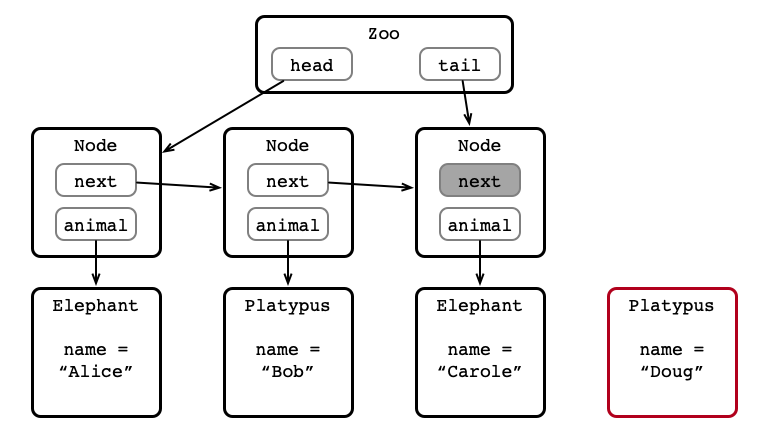
Step 1: Create a Node for Doug
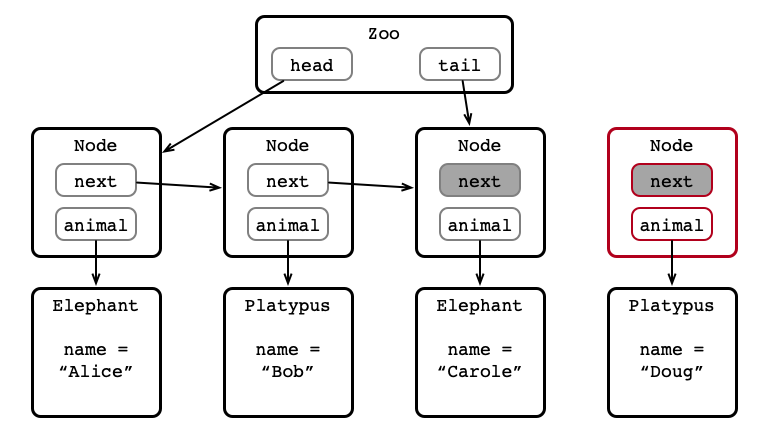
Step 2: Update tail.next
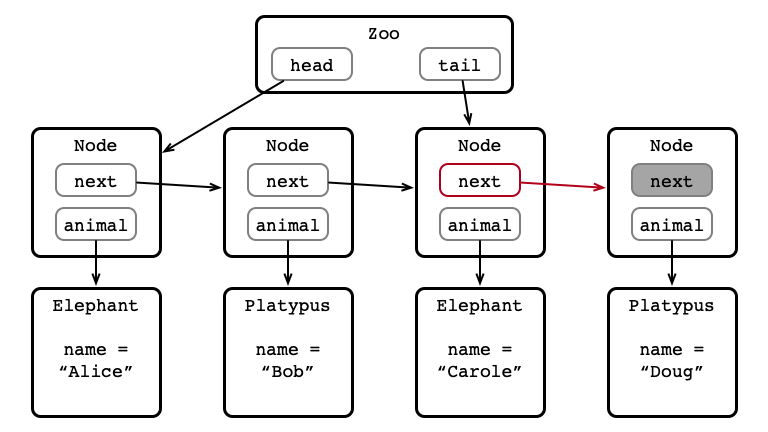
Step 3: Update tail
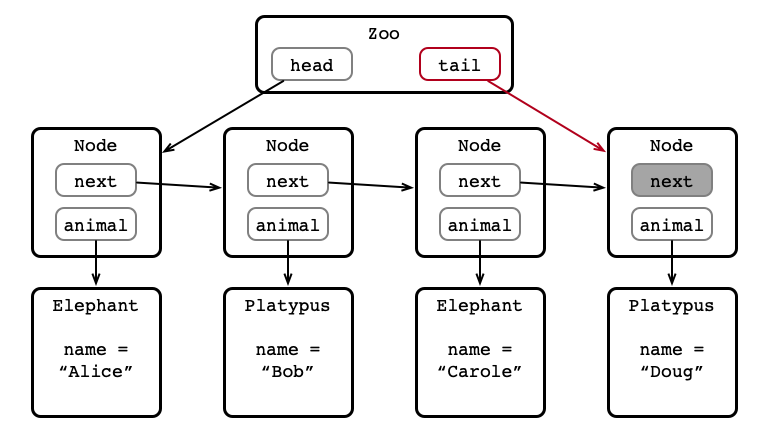
Now Doug is in the List
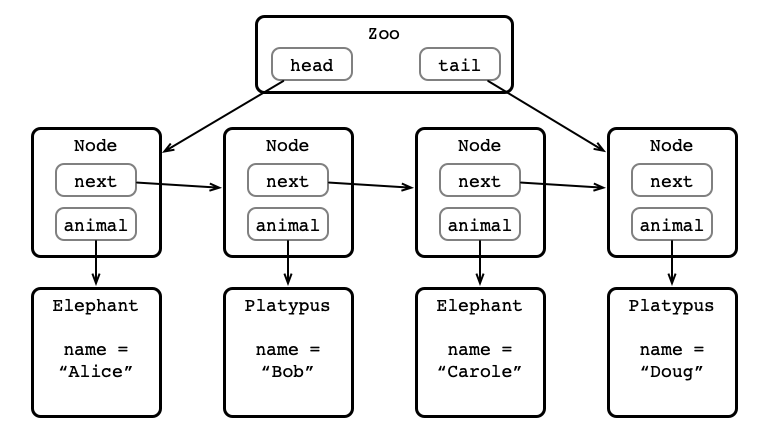
What if List Was Empty?

Make New Node head and tail
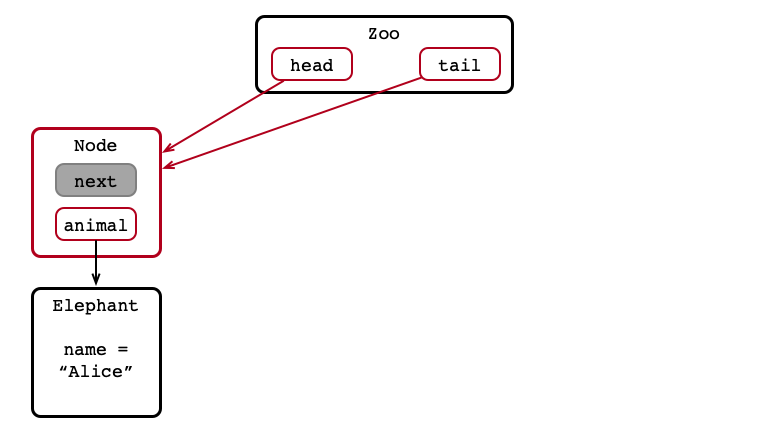
add in Code
- Create a
Nodefordoug:Node nd = new Node(doug); - If
tail != null- Update
tail.next:tail.setNext(nd); - Update
tail:tail = nd;
- Update
- Else
- Set
head,tail:head = nd; tail = nd;
- Set
Activity
Think about how to implement other Zoo operations!
- Feed all the animals
- Remove an animal
- Determine if the zoo contains a given animal
How to Implement feedAnimals?

How to Implement remove?

How to Implement contains?

Testing Our Code
Another Question
With the array Animal[] zoo we could access all of the Animals easily:
Animal[] zoo;
...
for (int i = 0; i < zoo.length; i++) {
// do something with zoo[i]
}
How could we do something similar with the Zoo class?
Coming Up
- Generics
- Interfaces
- Iterators